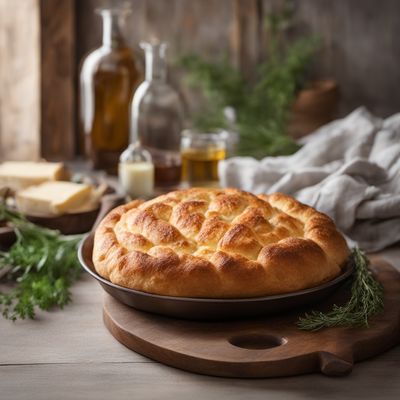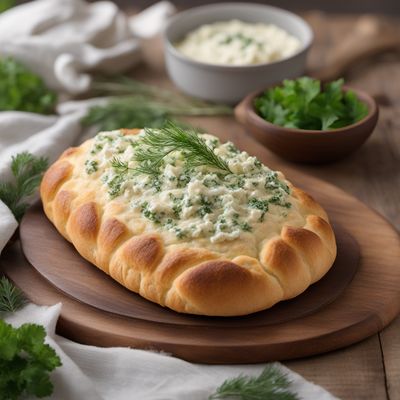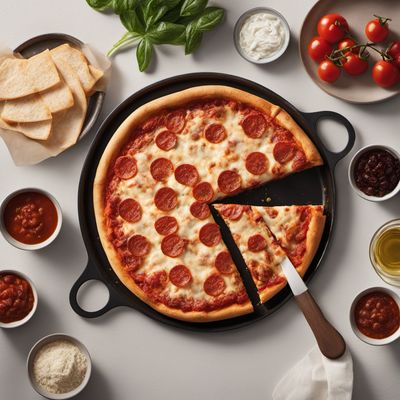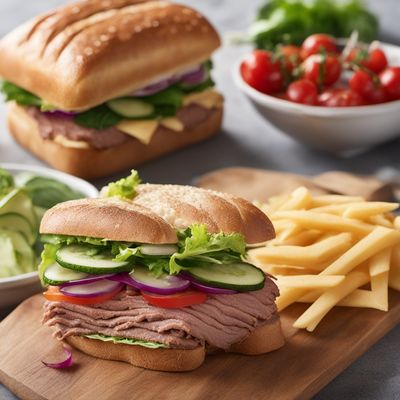
Ingredient
Yeast leavened bread doughs
The Magic of Rising Dough: Yeast Leavened Bread Doughs
Yeast leavened bread doughs are made by combining flour, water, yeast, and salt, and allowing the mixture to ferment and rise. The yeast consumes the sugars in the dough, producing carbon dioxide gas, which creates air pockets and causes the dough to expand. This process, known as fermentation, not only gives bread its characteristic texture but also develops complex flavors. The resulting bread can range from light and airy to dense and chewy, depending on the specific recipe and technique used.
Origins and history
The use of yeast in breadmaking dates back thousands of years, with evidence of its use in ancient Egypt and Mesopotamia. The discovery of wild yeast in the environment led to the development of leavened bread, which quickly became a staple food in many cultures. Over time, different types of yeast were cultivated and refined, leading to the creation of various bread recipes and techniques. Today, yeast leavened bread doughs are a fundamental component of global cuisine, with countless regional variations and traditional recipes.
Nutritional information
Yeast leavened bread doughs are a good source of carbohydrates and provide energy for the body. They also contain small amounts of protein and fiber. However, the nutritional content of bread made from yeast leavened doughs can vary depending on the specific recipe and ingredients used.
How to select
When selecting yeast for breadmaking, choose active dry yeast or instant yeast, which are the most commonly available types. Look for yeast that is within its expiration date and stored in a cool, dry place. Avoid yeast that has a strong odor or clumps together, as this may indicate that it is no longer viable. Additionally, choose high-quality flour and other ingredients to ensure the best results.
Storage recommendations
To maintain the freshness and quality of yeast leavened bread doughs, store them in a cool, dry place, away from direct sunlight. If the dough has already been shaped, cover it loosely with plastic wrap or a clean kitchen towel to prevent it from drying out. Once baked, bread made from yeast leavened doughs should be stored in a bread box or airtight container to maintain its texture and prevent it from becoming stale. It is best to consume bread within a few days of baking for optimal flavor and freshness.
How to produce
Producing yeast leavened bread doughs requires basic baking equipment, including a mixing bowl, measuring tools, and an oven. The process involves combining the ingredients, kneading the dough to develop gluten, allowing it to rise, shaping it into the desired form, and baking it until golden brown. There are countless recipes and techniques available, ranging from simple white bread to artisanal sourdough. Beginners can start with basic recipes and gradually explore more advanced techniques.
Preparation tips
Yeast leavened bread doughs can be used to create a wide variety of breads, including sandwich loaves, baguettes, dinner rolls, and artisanal breads. They can also be shaped into buns, pretzels, or even pizza dough. The possibilities are endless, and experimenting with different recipes and techniques can lead to delicious and satisfying results.
Culinary uses
Yeast leavened bread doughs are used in cuisines around the world. They are the foundation of traditional breads like baguettes in French cuisine, ciabatta in Italian cuisine, and pita bread in Middle Eastern cuisine. They are also used to create sweet breads like brioche and cinnamon rolls. Additionally, yeast leavened doughs can be flavored with herbs, spices, or other ingredients to create unique and flavorful breads.
Availability
Yeast leavened bread doughs are available worldwide and are a staple in most cultures. They can be found in grocery stores, bakeries, and even made at home. The availability of specific bread varieties may vary depending on the region and local baking traditions.
More ingredients from this category
Recipes using Yeast leavened bread doughs » Browse all

Gadazelili Khveli - Georgian Cheese Bread
Savory Delight: Georgian Cheese Bread with a Twist

Mkhlovani - Georgian Cheese-Filled Bread
Savory Georgian Delight: Mkhlovani - A Cheese-Filled Bread Extravaganza

Finnish Cardamom Pulla
Cardamom-infused Finnish Sweet Bread: A Delightful Pulla Recipe

Chicago Thin Crust Pizza
Savory Delight: Authentic Chicago Thin Crust Pizza

Classic British Sandwich Loaf
Layers of Delight: The Ultimate British Sandwich Loaf

Pane di Matera - Muisca Style
Andean Bread Delight

Maldivian Coconut Osterpinze
Tropical Twist: Maldivian Coconut Osterpinze

Focaccia Seravezzina with Rosemary and Sea Salt
Mediterranean Delight: Rosemary-infused Focaccia Seravezzina

New York-Style Pizza
Elevated New York-Style Pizza: A Nouvelle Cuisine Twist

Molecular Gastronomy Focaccia
The Futuristic Focaccia: Molecular Gastronomy Twist on an Italian Classic

Homemade Steamed BBQ Pork Buns
Savory Pillows: Steamed BBQ Pork Buns

Chinese Steamed Piggy Buns
Fluffy Pork-Filled Delights: Chinese Steamed Piggy Buns

